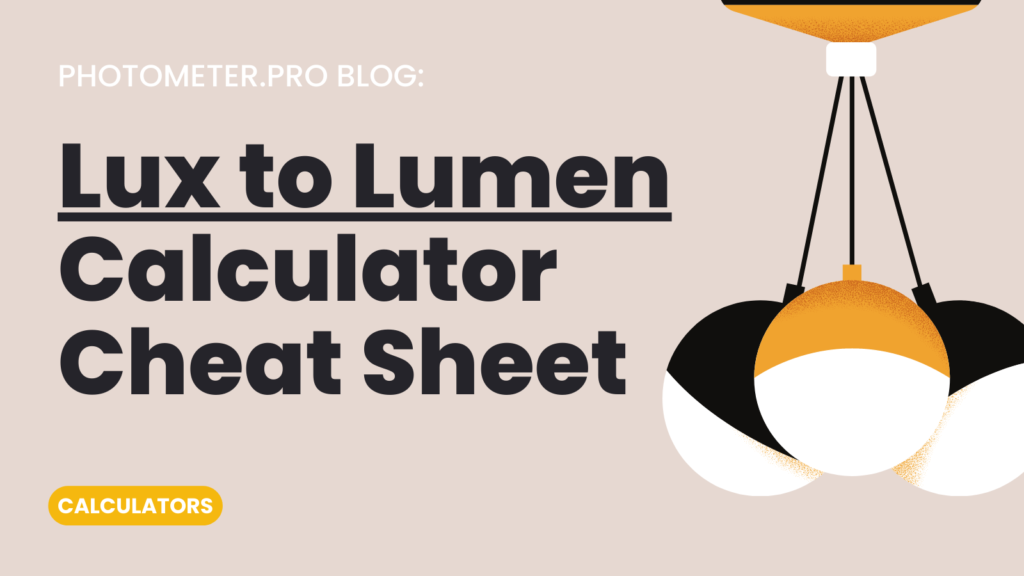We all know that light is essential to our everyday lives, but some of us don’t know how much light we need. If you’re looking for a lux to lumen calculator, this cheat sheet can help you convert between these two units of measurement so you can better understand which type of bulb will best suit your needs.
How to use the lux to lumen calculator
The lux to lumen converter is a simple tool that converts between lux and lumens. Lux is a measure of light intensity, while lumens is a measure of light output. Lux is an SI unit, while lumens are also used as SI units.
Lux is a measure of light intensity
Lux is a measure of light intensity. It’s based on the SI unit for illuminance, which is lumen per square meter. In simpler terms, lux measures how much light is falling on a surface. The higher the value of your lux reading, the brighter your room will be–and vice versa!
In order to calculate how many lumens you need for any given area you must first calculate its square footage (remember that one square foot equals 0.093 square meters). Then multiply this number by 10 if you want bright white light; multiply it by 13 if you want warm yellowish tones; multiply it by 16 if your goal is dimmer lighting with more orange hues; or multiply it by 20 if what matters most to you is mood lighting with reds and blues instead of whites and yellows.

Lux is an SI unit
Lux is an SI unit of illuminance, which is the amount of light that falls on a surface. It’s measured in lumens per square meter (lm/m2).
Lux is used to measure how bright something appears to be, like how much light comes through your window at night or how much light your computer monitor gives off when it’s turned on.
Lumen is a measure of light output
Luminous flux, or lumen, is a measurement of the total amount of visible light emitted by a source. It’s measured in lumens and can be thought of as how much light is produced by that source per unit of time. By contrast, lux measures illuminance–how many lumens there are in an area over one square meter (or foot).
So why do we need both? Because sometimes you want to know how much light hits an object at once, while other times it’s more useful to know how much illumination there is overall in a given space or room.
Lumen is an SI unit
The lumen is the SI unit for luminous flux, which is the amount of light emitted by a source in all directions, per solid angle. It can be measured in lumens/m^2 or lumens/ft^2.
The lux to lumen conversion formula
The lux to lumen conversion formula is:
lm = lux * 0.09290304
This means that if you know how many lumens of light a certain lamp produces, and want to find out how much illuminance (in lux) it produces, all you need to do is multiply by this factor.
Convert lux to lumens (lm) with this simple formula.
To convert lux to lumens, you need to know the following:
- The amount of light in lux (lx).
- The type of bulb you’re using and its wattage. For example, if you have a 100W incandescent bulb and want to convert its brightness from lx into lm, then use this equation: 100/22 = 4.5. So for every 4.5 lux there will be 100 watts of power being used by your light source!
Use this cheat sheet to convert between these two measures of illumination.
- Use this cheat sheet to convert between these two measures of illumination: lux and lumens.
- Follow the steps below to use the chart:
- Find your measurement on the left-hand side of the chart (lux or lumens).
- Move across until you reach your target unit (lux or lumens).
- Read off your answer at that point on the right-hand side of the chart (lumens/m^2).
Conclusion
Now that you know how to convert between lux and lumens, you can use this information to make better decisions about the lighting in your home or office. For example, if you’re shopping around for a new light bulb, it may be tempting to just look at how bright it is on its packaging without thinking about how much illumination actually reaches where you need it most. But now that we’ve shown you how easy it is to convert these two measurements–and given our handy-dandy cheat sheet above!–we hope that won’t happen again!
Editorial Team
I help fin-tech digital product teams to create amazing experiences by crafting top-level UI/UX.



